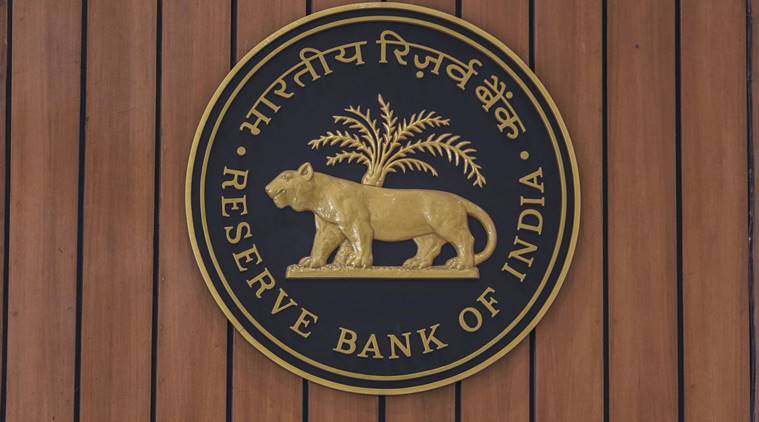Negative returns for savers may hold back RBI from repo rate cut
Technically, bank deposits are fetching negative real returns of nearly one per cent (-0.99 per cent) as one-year fixed deposit rate has come down to 5.10 per cent (State Bank of India rate) whereas inflation in June was 6.09 per cent.
 The Reserve Bank of India (RBI) decision to frontload repo rate cuts (115 basis points since February) to 4 per cent has partly led to negative returns for depositors. (File)
The Reserve Bank of India (RBI) decision to frontload repo rate cuts (115 basis points since February) to 4 per cent has partly led to negative returns for depositors. (File)
WITH REAL interest rates (interest rate minus inflation rate) turning negative, and erosion in the returns of savers, a large section of bankers say the Monetary Policy Committee (MPC) of the RBI— scheduled to meet August 4-6 — may adopt a status quo on policy rates in the near future.
Technically, bank deposits are fetching negative real returns of nearly one per cent (-0.99 per cent) as one-year fixed deposit rate has come down to 5.10 per cent (State Bank of India rate) whereas inflation in June was 6.09 per cent. “The positive real interest rate logic weighs against an immediate further rate cut based on the current inflation trajectory. There is a significant likelihood of MPC members voting for a pause during the forthcoming review,” said Mandar Pitale, Head of Treasury, SBM Bank India.
However, despite the fall in deposit rates, there has been a 10.8 per cent rise in bank deposits. SBI’s 2.70 per cent rate on savings deposit accounts effectively means a negative real return of -3.39 per cent after adjusting for inflation.
The Reserve Bank of India (RBI) decision to frontload repo rate cuts (115 basis points since February) to 4 per cent has partly led to negative returns for depositors. The uncertainty about inflation trajectory for next couple of months may weigh the rate decision. The upside inflation surprise suggests that headline inflation is likely to remain near the upper end of the RBI’s inflation mandate of 4 per cent plus or minus two till September, Pitale said.
With inflation still above the 6 per cent mark, the MPC may decide to wait and watch and take a pause in August to monitor India’s progress in its fight against the virus – both from a health and economic point of view, said Shanti Ekambaram, Group President-Consumer Banking, Kotak Mahindra Bank. “The MPC could then possibly cut the policy rate by a further 25 bps in the policy meeting at the end of September, which is traditionally India’s busy season,” she said.
“We believe an August rate cut is unlikely. With the 115 bps reduction in repo beginning February, banks have already transmitted 72 bps to the customers on fresh loans in the interregnum which is perhaps a milestone in terms of the fastest policy rate transmission in India,” says an SBI Research report. Large banks have transmitted as much as 85 basis points. The RBI has been effectively using huge liquidity and repo rate cuts to bring down rates. Banks parked around on an average of Rs 4.30 lakh crore in March, Rs 7.12 lakh crore in April, Rs 7.71 lakh crore in May and Rs 6.35 lakh crore in July 2020 with the RBI. The perpetually muted credit demand has pushed the banks to reduce their deposit rates and thereby lending rates to adjust to the new interest rate scenario, says the SBI Research report.
According to Radhika Rao, Economist, DBS Bank, the RBI policy committee will be in a tough spot due to overarching weakness in growth, nonetheless a pause on rates is also backed by cumulative 115 bps cut since January, above-target inflation, high-frequency indicators improving at the margin and concerns over inflationary expectations. “We expect 50 bps of cuts in the second half as downside risks to growth continue to mount,” Rao said.
The real returns for savers have turned negative for some months now. The CPI inflation-adjusted deposit rate (real interest rate) had turned negative -0.8 per cent in December 2019, when inflation touched 7.4 per cent and deposits rate 6.6 per cent. It continued in the negative zone due to the uptick in inflation and downward interest rate scenario. “We expect that inflation will remain at elevated levels for the next few months so the real interest rate will continue to be in the negative zone,” SBI report says.
“If we take a look at the income effect, it is a possibility that people might increase their savings in a low interest rate regime to compensate for the loss in income and especially if there is a excessive economic uncertainty regarding the future and there is absence of social security nets,” SBI says.
- 01
- 02
- 03
- 04
- 05































